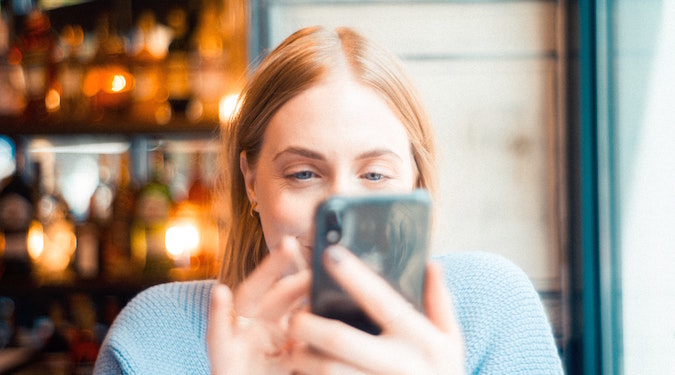Is ‘edu-tainment’ the way forward in a COVID-19 world?
Share

Amaury Tréguer unpacks the term ‘edu-tainment’ and how brands can shift their tone of voice to provide entertainment and utility during this time.
During this unprecedented time, the spotlight is on how brands react. Now is the time, more than ever, for brands to act as catalysts, to bring people together and support people through this turbulence. Brands that don’t will feel the wrath of the consumer and those that try too hard or look too opportunistic will feel the effects post COVID-19.
So how should brands react?
It’s important to consider four key buckets: physiology, safety, love and the need to belong.
We have seen numerous examples of brands already helping on that front. For example, Netflix has launched a new Chrome extension allowing friends to watch shows together when they can’t be physically together. Houseparty, an app launched back in 2016 allowing users to video call friends, play games and quizzes is experiencing a record number of downloads while Zoom is also experiencing a major surge in the B2B space.
If done well, by providing entertainment and/or utility, brands could become the perfect comfort for consumers. However, they might need to revisit the tone they are using in the current climate.
According to a study from Twitter UK, only six percent of Twitter users suggest brands should use their normal tone of voice. Instead, they suggest brands adopt the following tones: informative (48 percent), supportive (41 percent), positive (35 percent), sincere (26 percent) and encouraging (25 percent).
With a global increase in people working from home, or unable to work at all, many are keeping themselves occupied with DIY tasks. According to Brandwatch, there has been a 37 percent increase in unique conversations in this space since March 2 and Google Trends suggests global ‘how to’ searches are at their highest since Christmas 2017. This harks back to the website, How to fix a toilet, which mapped out the most ‘how to’ searches, with how to fix a toilet being the biggest globally.
All of this supports the idea that ‘edu-tainmment’ (education and entertainment) content is the best thing that brands should be pushing out right now.
So, where to start? Marketers should start by using social listening capabilities to understand the current gaps. Simultaneously, they should map out what consumer needs their products fulfil and how the experience may have been affected since the burst of the virus.
For example, if you are in the food and beverage category, chances are you may be low on supply as people have been stockpiling products without paying too much attention to the brands they are purchasing, which could obviously represent an amazing opportunity to attract a new set of customers post COVID-19 crisis. Some people are desperate to learn more to cook or even make cocktails to spice up their Friday and Saturday nights in front of video conferences with their friends and family. Therefore, providing food ideas, easy to make recipes or cocktails could be the best thing that brands can publish on their channels. But only if it’s relevant and authentic for your brand.
One of the ways to meet your customer needs is by looking at what people have been searching for online and how your brand could naturally tie in.
According to Google Trends in Australia, ‘how to make hand sanitiser spray’ is on the rise by 3,000 percent. The solution is quite simple if you can get your hands (excuse the pun) on three main ingredients: isopropyl alcohol, aloe vera gel and essential oil. Now imagine you are a skin care brand like Aesop, you may experience some issues with your retail footprint and the lock-out of non-essential shops. What about driving online sales by showing consumers how your essential oils could be used to create hand sanitisers? People are desperate to stay clear of the virus, so providing a simple step-by-step video in your social feeds could then boost your online orders for your range of essential oils.
In the same vein, if you own a car, you may be interested in understanding how to keep the interior clean from nasty germs. This is exactly what we have worked on with our partners at Toyota, to help car owners to stay safe during this period. The posts are already receiving great traction with people sharing and tagging their friends.
Another way for brands to think about what content to post is to revisit what are their Frequently Asked Questions (FAQs) or the ones in their category by using a tool like, Answer the Public, which highlights the key search queries that people are typing within Google and Bing.
In a world where we are required to be ‘social distancing compliant’, creating content may be a challenge, particularly as organising a shoot is likely to be out of the question in the next few months. But there may be a solution to this issue and that lies in what’s in your archives. Now is the time to take a look through your archive content, b-roll footage and involving social influencers/content creators that can shoot from the comfort of their own home. You might also think about illustrations, animations or even user generated content as the way forward.
In a nutshell, stay safe and think creatively. There has never been a better time to see what else your brand, product or expertise could be used for. Take the example of my friend Luke who had a successful signage company and is now experiencing a rapid downturn with cancelled orders. In just a couple of days, he reinvented himself and just launched WFHstand.com – a foldable stand up desk for the new digital nomads that we all became overnight. Anything is possible… but just read the room first.
Amaury Tréguer is the executive director social at Red Havas.
Photo by John Tuesday on Unsplash.















